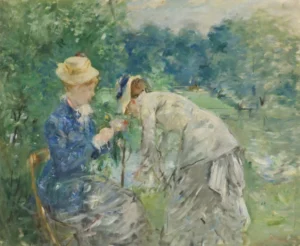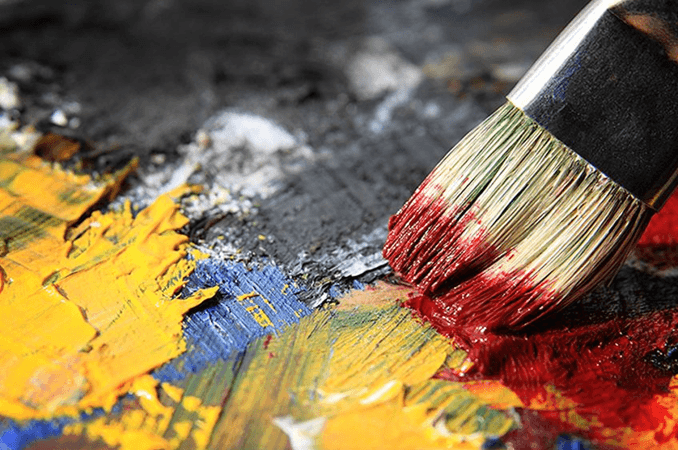A Comprehensive Guide for Artists
Oil painting is a beloved medium for its rich colors, versatility, and ability to create stunning textures. However, one of the most common questions artists have is: How long does oil paint take to dry? The answer isn’t straightforward, as drying times can vary widely depending on several factors. In this blog post, we’ll explore everything you need to know about oil paint drying times, including tips to speed up or slow down the process.
Why Oil Paint Dries Slowly
Unlike watercolors or acrylics, oil paints dry through a process called oxidation, not evaporation. This means the paint reacts with oxygen in the air to form a solid film. Because this is a chemical process, it takes significantly longer than the drying process of other mediums. While this slow drying time can be frustrating for some, it’s also what makes oil painting so unique—it allows artists to blend, rework, and refine their paintings over days or even weeks.
Factors That Affect Drying Time
Several factors influence how long oil paint takes to dry. Understanding these can help you plan your painting process more effectively.
1. Paint Composition
- Pigments: Different pigments dry at different rates. For example, earth tones like burnt umber and raw sienna dry faster, while colors like ivory black and alizarin crimson take much longer.
- Oil Content: Paints with higher oil content (such as linseed oil) dry slower than those with less oil.
2. Environmental Conditions
- Temperature: Oil paints dry faster in warm environments and slower in cold ones.
- Humidity: High humidity can slow down drying times, while low humidity speeds them up.
- Airflow: Good ventilation helps the oxidation process, allowing paint to dry more quickly.
3. Thickness of Application
Thick layers of paint (impasto technique) take much longer to dry than thin layers. If you’re working with thick applications, be prepared to wait several days or even weeks for the paint to fully dry.
4. Use of Mediums
- Drying Accelerators: Adding mediums like liquin or cobalt drier can speed up drying times.
- Slow-Drying Mediums: Linseed oil or stand oil can extend drying times, giving you more time to work.
General Drying Times for Oil Paint
While drying times can vary, here’s a general guideline:
- Touch Dry: Oil paint may feel dry to the touch within 24 to 48 hours for thin layers. However, this doesn’t mean the paint is fully cured.
- Surface Dry: A thin layer of paint can dry on the surface in 2 to 12 days, depending on the factors mentioned above.
- Fully Cured: Oil paint can take anywhere from 6 months to a year to fully cure, meaning it’s completely dry and stable.

How to Speed Up Drying Time
If you’re working on a tight deadline or simply don’t want to wait too long, here are some tips to speed up the drying process:
- Use Fast-Drying Paints: Choose pigments that naturally dry faster, such as earth tones.
- Add a Drying Medium: Incorporate a small amount of drying accelerator into your paint.
- Paint in Thin Layers: Thin layers dry faster than thick ones.
- Increase Airflow: Use a fan or open windows to improve ventilation.
- Work in a Warm Environment: Keep your workspace warm (but not too hot, as this can cause cracking).
How to Slow Down Drying Time
Sometimes, you may want to extend the drying time to allow for more blending and reworking. Here’s how:
- Use Slow-Drying Paints: Opt for pigments like ivory black or alizarin crimson.
- Add a Slow-Drying Medium: Mix in linseed oil or stand oil to slow the drying process.
- Work in a Cool, Humid Environment: Lower temperatures and higher humidity can slow drying times.
- Store Your Palette Properly: To keep your paints workable overnight, place your palette in the freezer or cover it with plastic wrap.
Tips for Working with Oil Paint Drying Times
- Plan Your Layers: Start with faster-drying colors in the underpainting and save slower-drying colors for later layers.
- Test for Dryness: Before adding a new layer, gently touch the paint in an inconspicuous area to ensure it’s dry enough.
- Be Patient: Rushing the drying process can lead to cracking or other issues. Allow each layer to dry fully before proceeding.
- Varnish with Care: Wait at least 6 months before varnishing your painting to ensure the paint is fully cured.
Final Thoughts
Understanding how long oil paint takes to dry is essential for planning and executing your artwork. While the slow drying time can be a challenge, it’s also what makes oil painting so versatile and rewarding. By considering factors like paint composition, environmental conditions, and application techniques, you can work with the drying process to create stunning, long-lasting masterpieces.

